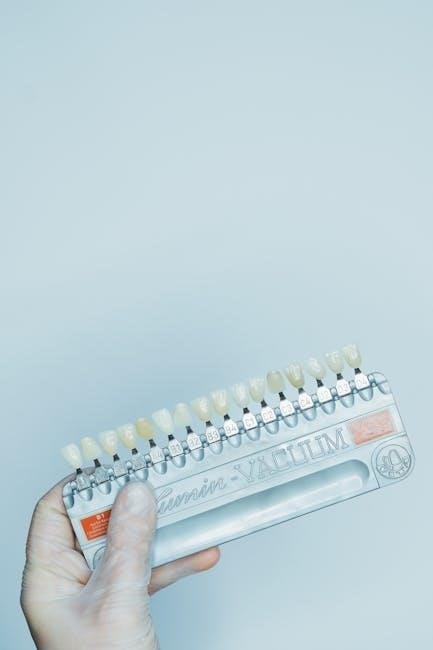
A shade guide is a crucial tool in teeth whitening, helping determine starting points and progress. It ensures realistic expectations and personalized results, varying by individual tooth color and goals.
1.1 What is a Shade Guide?
A shade guide is a tool used in dentistry to assess and match tooth colors. It consists of a series of tabs or samples representing different shades, from light to dark, and varying hues. The most common system is the VITA Classical Shade Guide, which offers 16 natural tooth shades. Dentists use it to determine the color of a patient’s teeth for restorations, veneers, or crowns. It also helps track progress during teeth whitening and ensures realistic expectations for treatment outcomes. This guide is essential for achieving accurate and aesthetically pleasing results in dental procedures.
1.2 Importance of Shade Guides in Teeth Whitening
Shade guides are vital in teeth whitening as they help set realistic expectations and ensure personalized treatment. By assessing a patient’s starting tooth color, dentists can determine achievable results and monitor progress. Tools like the VITA Shade Guide provide a standardized reference, ensuring accurate and consistent outcomes. They also facilitate communication between dentists and patients, allowing individuals to visualize and discuss their desired shade. This tool is essential for achieving natural-looking results and maintaining patient satisfaction, making it a cornerstone in modern cosmetic dentistry and whitening procedures.
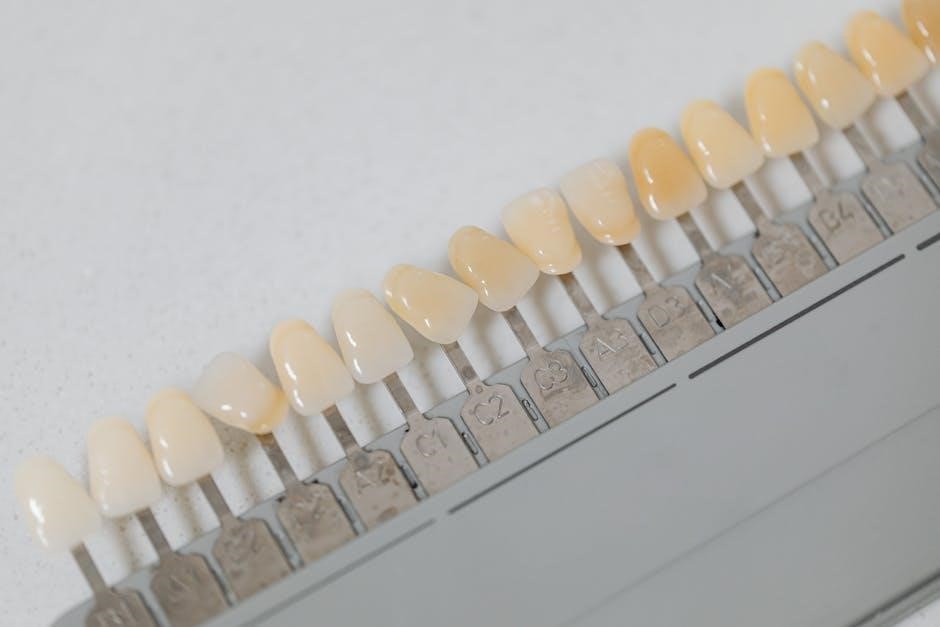
Understanding Tooth Color and Shades
Tooth color varies naturally, influenced by enamel, dentin, and stains. Shade guides help assess and match these colors, ensuring accurate whitening results and tracking progress effectively.
2.1 Natural Tooth Color Variations
Natural tooth color varies widely among individuals, influenced by genetics, enamel thickness, and dentin color. Teeth range from light shades like VITA A1 to darker shades like VITA D4. The VITA Shade Guide categorizes these variations systematically, considering lightness, chroma, and hue. Understanding these natural differences is crucial for personalized dental treatments, ensuring results align with each patient’s unique characteristics. This variation also highlights the importance of shade guides in achieving realistic and aesthetically pleasing outcomes for teeth whitening and restorative procedures.
2.2 Factors Influencing Tooth Color
Tooth color is influenced by genetics, enamel thickness, and dentin hue. Thinner enamel reveals more of the yellowish dentin beneath, while thicker enamel appears whiter. Aging, diet, and oral hygiene also play roles, as stains from coffee, tea, or tobacco can darken teeth. Additionally, certain medications or health conditions can affect tooth color. Understanding these factors is essential for accurate shade matching and personalized treatment planning in teeth whitening and restorative dentistry. These variations highlight the importance of using shade guides to achieve natural and aesthetically pleasing results tailored to each patient’s unique dental characteristics.
2.3 The Role of Shade Guides in Assessing Tooth Color
Shade guides are essential tools for assessing tooth color, providing a standardized reference for dentists to evaluate and compare tooth shades. They help determine a patient’s starting point and track progress during whitening treatments; By using a shade guide, dentists can communicate effectively with patients, setting realistic expectations and ensuring satisfaction. The VITA Classical Shade Guide, for example, offers a widely recognized system for categorizing tooth colors, enabling precise matching and personalized treatment plans. This ensures that whitening results align with natural aesthetics, enhancing both functionality and patient confidence in their smile transformation.

The VITA Shade Guide System
The VITA Shade Guide System offers standardized references for tooth color assessment, with options like the Classical (16 shades) and 3D-Master (26 shades), aiding precise matching and personalized whitening treatments.
3.1 Overview of the VITA Classical Shade Guide
The VITA Classical Shade Guide is a widely recognized tool in dentistry, offering 16 natural tooth shades and three bleached shades for whitening. Its linear design simplifies shade selection, making it user-friendly for dentists to match tooth colors accurately. This system is particularly effective for restorations and whitening treatments, providing a reliable reference for achieving natural-looking results. The guide’s simplicity and effectiveness have made it a standard in dental practices worldwide for decades.
3.2 The VITA 3D-MASTER Shade Guide
The VITA 3D-MASTER Shade Guide is an advanced system offering 26 natural tooth shades and three bleached shades for whitening. Organized by lightness, chroma, and hue, it provides a systematic approach to shade matching. This guide allows for precise color selection and the creation of intermediate shades by mixing. Its clear structure enhances communication between dentists and patients, ensuring accurate and aesthetic outcomes. The 3D-MASTER is particularly useful for complex cases, making it a preferred choice for modern dental practices seeking high accuracy and natural-looking results in restorations and whitening treatments.
3.3 VITA Bleached Shades for Whitening
The VITA Bleached Shades are specifically designed for tooth whitening, offering three additional shades beyond the natural range. These shades help determine the desired lightness level for bleaching, ensuring realistic and achievable results. The guide includes 29 levels of lightness, providing a clear and structured approach to tracking progress. This system enhances communication between dentists and patients, allowing for accurate visualization of potential outcomes. The VITA Bleached Shades are integrated into the 3D-MASTER system, making them a valuable tool for achieving natural and aesthetically pleasing results in teeth whitening procedures.

How Dentists Use Shade Guides
Dentists use shade guides to match tooth color for restorations, track whitening progress, and communicate effectively with patients about achievable results and expectations.
4.1 Matching Tooth Color for Restorations
Dentists use shade guides to precisely match tooth color for restorations like veneers, crowns, and implants. The VITA Classical and 3D-MASTER systems offer systematic shade options, ensuring natural-looking results. By comparing the patient’s tooth color to the guide, dentists can select the most accurate shade for prosthetics, aligning with adjacent teeth. This process minimizes discrepancies and enhances aesthetic outcomes. The guides are arranged by lightness, chroma, and hue, allowing for precise matching. This step is crucial for achieving seamless integration of restorations, ensuring patient satisfaction and functional harmony.
4.2 Determining Whitening Potential
Shade guides are essential for assessing how much whiter teeth can become. Dentists use tools like the VITA Classical and 3D-MASTER systems to evaluate starting shades and predict achievable results. By comparing initial tooth color to the guide, professionals can set realistic expectations, considering factors like enamel thickness and stain severity. This ensures personalized treatment plans, avoiding over-whitening. The guides also help track progress during treatments, allowing adjustments for optimal outcomes. This step is crucial for balancing aesthetics and patient satisfaction, ensuring natural-looking results that align with individual goals and dental health.
4.3 Setting Realistic Expectations for Patients
Shade guides play a vital role in managing patient expectations by providing a visual reference for achievable results. Dentists use these tools to demonstrate potential outcomes, ensuring patients understand that whitening results vary based on initial tooth color and treatment type. By aligning expectations with realistic goals, shade guides help minimize disappointment and enhance satisfaction. They also facilitate open communication, allowing patients to express preferences and receive tailored advice. This collaborative approach fosters trust and ensures that patients have a clear understanding of what to expect from their teeth whitening journey.
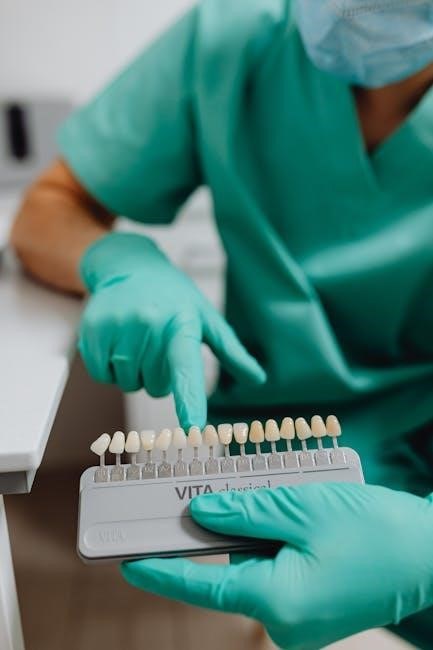
The Role of Shade Guides in Cosmetic Dentistry
Shade guides are essential for selecting natural, aesthetically pleasing tooth colors in cosmetic procedures like veneers and implants, ensuring harmonious results that match individual patient preferences and expectations.
5.1 Shade Selection for Veneers and Crowns
Shade guides are indispensable in selecting the perfect tooth color for veneers and crowns, ensuring a seamless match with natural teeth. Dentists use tools like the VITA Classical and 3D-MASTER systems to determine the ideal shade, considering lightness, chroma, and hue. These guides offer a range of options, from natural tones to bleached shades, allowing for personalized results. Accurate shade selection enhances aesthetic outcomes, ensuring restorations blend harmoniously with adjacent teeth. This process involves careful comparison and patient consultation to achieve the desired cosmetic goals, making shade guides a cornerstone in modern cosmetic dentistry.
5.2 Importance in Dental Implants and Bridges
Shade guides play a vital role in dental implants and bridges, ensuring a natural-looking match with adjacent teeth. The VITA Classical and 3D-MASTER systems offer precise shade options, helping dentists achieve aesthetic harmony. For implants, selecting the right shade ensures the prosthetic tooth blends seamlessly with natural teeth, while bridges require matching both color and translucency. This attention to detail enhances the overall appearance and patient satisfaction, making shade guides essential for restoring both function and beauty in complex dental restorations.
5.3 Enhancing Aesthetic Outcomes
Shade guides are instrumental in achieving natural, harmonious results in cosmetic dentistry. By accurately matching tooth color, they ensure restorations like veneers and crowns blend seamlessly with natural teeth. This precision enhances the overall aesthetic appeal, creating a balanced and radiant smile. Patients benefit from personalized treatment, as shade guides help tailor solutions to their unique tooth color and desired outcomes. The psychological impact of an improved smile is significant, boosting confidence and self-esteem. Thus, shade guides are essential for delivering visually stunning and lifelike results in teeth whitening and cosmetic procedures.
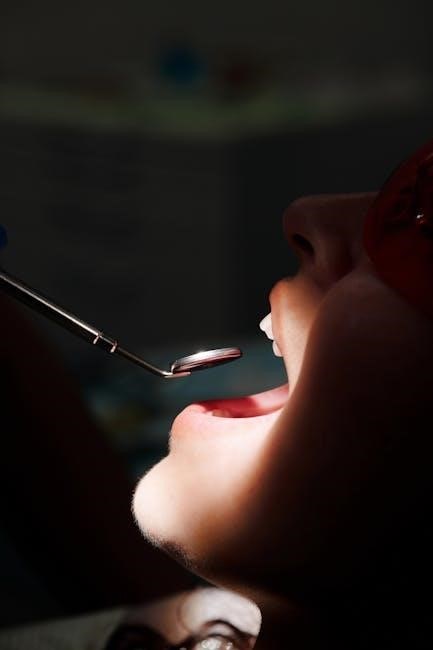
Benefits of Using a Shade Guide
Shade guides ensure personalized treatment planning, improve communication between dentists and patients, and minimize restoration discrepancies. They help set realistic expectations and achieve optimal aesthetic results in teeth whitening.
6.1 Personalized Treatment Planning
Shade guides enable dentists to create tailored treatment plans by assessing initial tooth color and setting realistic whitening goals. This personalized approach ensures treatments align with individual preferences and dental needs. By using tools like the VITA Classical or 3D-MASTER guides, dentists can accurately track progress and adjust treatments for optimal results. This customization helps achieve natural-looking outcomes, enhancing patient satisfaction and ensuring the whitening process is both effective and aesthetically pleasing.
6.2 Improved Communication Between Dentist and Patient
Shade guides serve as a visual tool, enhancing communication between dentists and patients. By referencing the guide, patients can better understand their current tooth color and potential whitening outcomes. This shared reference point allows patients to express their preferences and expectations clearly. Dentists can also use the guide to demonstrate achievable results, ensuring alignment between patient goals and realistic possibilities. This collaborative approach fosters trust and ensures both parties are working toward the same aesthetic objectives, leading to more satisfying and personalized outcomes.
6.4 Minimizing Discrepancies in Restorations
Shade guides play a pivotal role in ensuring restorations match natural tooth colors, minimizing discrepancies. By using standardized systems like the VITA Classical Shade Guide, dentists can accurately replicate tooth hues, reducing mismatches. This consistency is crucial for procedures such as veneers, crowns, and implants, where seamless integration with adjacent teeth is essential. The guide’s structured approach helps avoid errors, ensuring restorations blend naturally. This precision not only enhances aesthetic outcomes but also reduces the need for remakes, saving time and improving patient satisfaction. Accurate shade matching is fundamental for achieving lifelike, harmonious results in dental restorations.
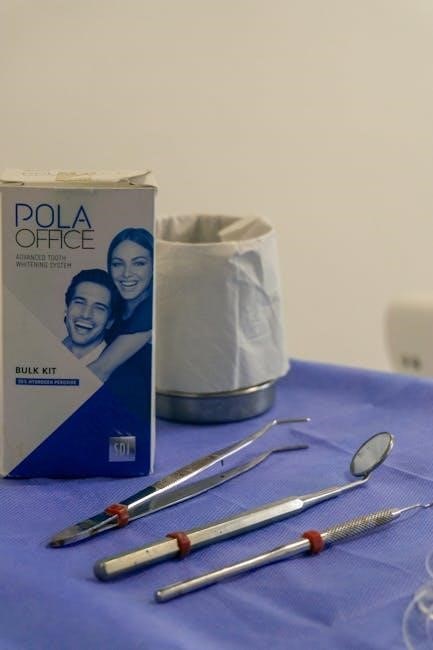
Limitations and Considerations
Shade guides have limitations, as natural tooth colors vary widely and stains can affect accuracy. Achieving desired shades can be challenging, requiring personalized approaches and realistic expectations.
7.1 Variability in Natural Tooth Colors
Natural tooth colors vary significantly due to genetics, aging, and lifestyle factors, making shade matching challenging. While shade guides like VITA provide standardized references, individual variations in tooth hue, chroma, and lightness can lead to discrepancies. These natural differences affect how whitening results are perceived, as some teeth may not align perfectly with guide shades. This variability underscores the importance of personalized treatment planning and realistic expectations, ensuring that whitening outcomes align with each patient’s unique dental characteristics and goals.
7.2 Challenges in Achieving Desired Shades
Achieving desired tooth shades can be challenging due to factors like enamel thickness, intrinsic stains, and discoloration. Some stains, especially deep-seated ones, may resist whitening treatments, limiting shade improvement. Additionally, natural tooth color variability and individual responses to whitening agents can affect outcomes. Dentists use shade guides to set realistic expectations, but even with advanced tools like the VITA system, perfect alignment with desired shades isn’t always possible. This highlights the importance of personalized treatment plans and open communication to manage patient expectations effectively.
7.3 Impact of Stains and Discoloration
Stains and discoloration significantly impact teeth whitening outcomes, as they can limit the effectiveness of treatments. Intrinsic stains, deep within the enamel, are harder to address than surface-level extrinsic stains. Discoloration from factors like coffee, tobacco, or aging can affect how well whitening agents penetrate and alter tooth color. Shade guides help identify these challenges, but some stains may resist treatment, making it difficult to achieve desired shades. This underscores the importance of personalized treatment plans and maintaining realistic expectations, as not all discoloration can be fully corrected through whitening alone.

Choosing the Right Shade for Teeth Whitening
Shade guides help patients and dentists select the ideal tooth color, considering natural variations, stains, and personal preferences. They provide a visual reference to achieve realistic, aesthetic results.
8.1 Factors to Consider for Shade Selection
When selecting a shade for teeth whitening, consider natural tooth color, skin tone, and hair color for harmony. Assess existing dental work to ensure consistency. Lightness, chroma, and hue play roles, as do personal preferences and whitening goals. The VITA Shade Guide helps match shades accurately, while considering stains and discoloration. Realistic expectations based on starting shade and treatment potential are crucial. Communication with your dentist ensures a personalized approach, balancing aesthetics with natural appearance to achieve satisfying results tailored to your smile and overall look.
8.2 How to Communicate Your Preferences to Your Dentist
Effectively communicating your preferences involves discussing your desired shade using the VITA Shade Guide. Share your lifestyle habits, like smoking or coffee consumption, which may impact results. Express your aesthetic goals, such as achieving a natural look or a brighter smile. Mention any concerns about sensitivity or maintaining a realistic appearance. Providing clear feedback ensures personalized treatment, aligning expectations with achievable outcomes for a satisfying result.
8.3 Avoiding Over-Whitening and Maintaining Natural Appearance
Avoiding over-whitening is crucial for maintaining a natural look. Use the VITA Shade Guide to select a shade that complements your skin tone and natural aesthetics. Consider factors like enamel thickness and inherent tooth color to avoid unnatural results. Over-whitening can lead to a stark, artificial appearance, so it’s important to work closely with your dentist to choose a shade that enhances your smile without exceeding realistic boundaries. Regular follow-ups and good oral hygiene help preserve your results and maintain a healthy, natural appearance over time.
Digital Tools and Modern Shade Matching
Digital tools like the VITA 3D-MASTER system enhance shade matching accuracy, offering precise color selection and tracking for teeth whitening. These advanced technologies streamline the process, ensuring optimal results efficiently.
9.1 Advanced Technology in Shade Matching
Advanced technology in shade matching has revolutionized teeth whitening by enhancing accuracy and efficiency. Digital tools like the VITA 3D-MASTER system provide precise color selection, enabling dentists to track progress and visualize results effectively. These tools utilize high-resolution imaging and AI-driven algorithms to ensure optimal shade matching, reducing discrepancies and improving patient satisfaction. Digital shade guides also facilitate better communication between dentists and patients, allowing for personalized treatment planning and realistic expectations. This modern approach streamlines the whitening process, ensuring natural and aesthetically pleasing outcomes tailored to individual needs.
9.2 Digital Shade Guides and Their Accuracy
Digital shade guides have significantly improved the accuracy of tooth color matching in teeth whitening. These tools use advanced technology to capture precise color data, ensuring consistent and reliable results. Unlike traditional physical guides, digital systems minimize human error by providing objective measurements. They also offer real-time tracking of whitening progress, allowing dentists to adjust treatments accurately. With high accuracy rates, digital shade guides enhance the effectiveness of whitening procedures, delivering results that align closely with patient expectations and desired outcomes.
9.3 The Future of Shade Matching in Dentistry
The future of shade matching in dentistry lies in advanced digital and AI-driven technologies. These tools are expected to enhance precision and efficiency, offering real-time shade analysis and customization. Machine learning algorithms will analyze vast datasets to predict optimal shades, reducing human error. Additionally, 3D printing and virtual reality may integrate with shade guides, allowing patients to visualize results before treatment. As technology evolves, shade matching will become more accurate, streamlined, and patient-centric, revolutionizing teeth whitening and restorative procedures for better aesthetic and functional outcomes.
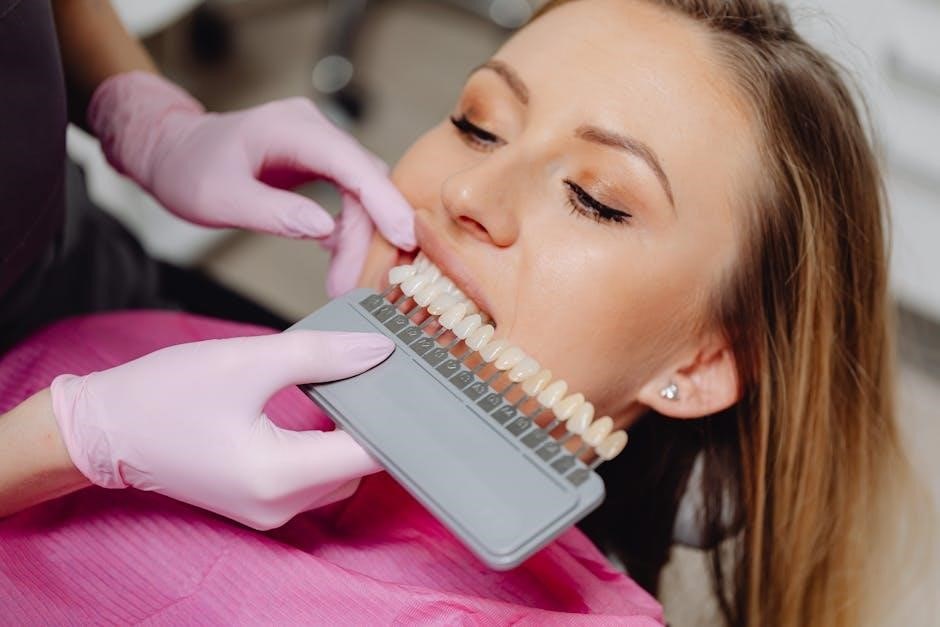
Maintenance and Aftercare
Proper maintenance ensures long-lasting whitening results. Avoid staining agents like coffee and tobacco, use fluoride toothpaste, and attend regular dental check-ups for optimal teeth health and appearance.
10.1 Tips for Maintaining Whitened Teeth
To maintain whitened teeth, avoid staining agents like coffee, tea, and red wine. Use a straw for dark beverages and brush gently with fluoride toothpaste. Regular dental cleanings and touch-ups can preserve results. Avoid smoking and limit sugary snacks to prevent discoloration. Incorporate a desensitizing toothpaste if needed. For at-home care, consider using whitening toothpaste or mouthwash. Attend follow-up appointments to monitor progress and adjust treatments. A balanced diet and good oral hygiene practices are essential for long-term success and a radiant smile.
10.2 Importance of Follow-Up Appointments
Follow-up appointments are crucial for monitoring whitening progress and ensuring long-term results. They allow dentists to assess shade stability and address any concerns. Regular check-ups help maintain the desired tooth color and prevent re-staining. During these visits, adjustments can be made to the treatment plan if needed. Additionally, follow-ups enable early detection of potential issues, ensuring optimal oral health. Consistent communication with your dentist is key to achieving and preserving a bright, healthy smile. These appointments are vital for sustaining the aesthetic and functional outcomes of your teeth whitening journey.
10.3 Long-Term Care for Optimal Results
Long-term care is essential to maintain the results of teeth whitening. To preserve your desired shade, avoid staining agents like coffee, tea, and red wine. Regular dental cleanings and check-ups help prevent re-staining. Using toothpaste specifically designed for whitened teeth can also aid in maintaining brightness. Touch-up treatments may be necessary to sustain results over time. By adhering to these practices, you can enjoy a radiant smile for years. Consistent care ensures the longevity of your whitening treatment and keeps your teeth looking their best.
Shade guides are essential for determining starting points and tracking progress in teeth whitening, ensuring realistic expectations and personalized results for a brighter, more confident smile.
11.1 Summary of Key Points
Shade guides are essential tools for determining starting points and tracking progress in teeth whitening. They help set realistic expectations and personalize treatment. The VITA system, including classical and 3D versions, offers a range of shades to match natural tooth colors. Shade guides aid in communication between dentists and patients, ensuring natural-looking results. They minimize discrepancies in restorations and are vital for procedures like veneers and implants. Proper maintenance post-whitening is crucial for long-term results, emphasizing the importance of shade guides in achieving and sustaining a brighter smile.
11.2 The Role of Shade Guides in Successful Teeth Whitening
Shade guides play a pivotal role in successful teeth whitening by providing a standardized reference for tooth color assessment. They help dentists and patients visualize and achieve desired results, ensuring natural aesthetics. By matching initial tooth shades and tracking progress, shade guides enable personalized treatment plans. They also facilitate clear communication, setting realistic expectations and minimizing potential discrepancies. The VITA system, with its comprehensive range of shades, is particularly effective in this process. Ultimately, shade guides are indispensable for delivering satisfying, long-lasting outcomes in teeth whitening procedures, ensuring both functionality and cosmetic satisfaction.

Further Reading and Resources
Explore the VITA Shade Guides website for detailed information on tooth color systems. Visit professional dental organizations for additional resources and articles on shade selection and modern tools.
12.1 Recommended Articles and Guides
For deeper insights, visit the VITA Shade Guides website, offering comprehensive details on tooth color systems. Professional dental organizations provide articles on shade selection and modern tools. Explore guides like “Understanding Tooth Color” and “Advanced Shade Matching” for expert advice. These resources help patients and professionals alike make informed decisions, ensuring optimal results in teeth whitening and cosmetic dentistry. Stay updated with the latest trends and technologies in shade matching through these recommended readings.
12.2 Professional Organizations and Websites
Professional organizations like the American Dental Association (ADA) and VITA North America offer valuable resources on shade guides. Their websites provide detailed information on tooth color systems, including the VITA Classical and 3D-MASTER guides. These platforms are essential for both dental professionals and patients, offering insights into advanced shade matching technologies and best practices. Visit VITA North America for comprehensive guides on tooth shade determination and whitening. These resources ensure accurate and reliable information for achieving optimal aesthetic outcomes in dental care.




